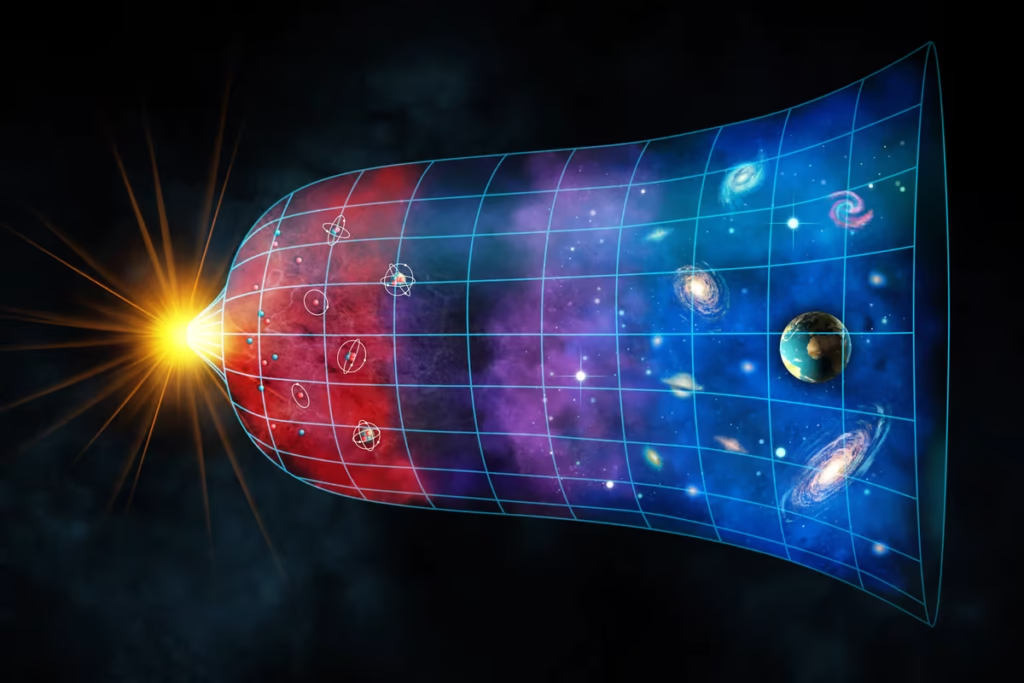The universe is a wondrous entity, constantly evolving and replete with mysteries waiting to be unveiled. Recent research has ignited excitement within the astrophysical community as scientists have confirmed that the universe is expanding at a pace faster than previously calculated. This revelation not only enhances our comprehension of cosmic dynamics but also raises significant questions about the fundamental principles governing our universe.
The Essence of Cosmic Expansion
Cosmic expansion refers to the increase in distance between galaxies over time. This phenomenon originated from the Big Bang approximately 13.8 billion years ago. Evidence supporting this theory is grounded in the observation of redshift—the change in the wavelength of light emitted by distant galaxies as they move away from us. The faster the galaxies withdraw, the more redshift we observe.
Redshift and Hubble’s Law
- Hubble’s Law: Formulated by Edwin Hubble, this law indicates a linear relationship between the distance of galaxies and their recessional velocity.
- Redshift Observations: Light from distant galaxies shifts toward the red end of the spectrum, indicating that these galaxies are moving away from us, a fundamental aspect of cosmic expansion.
New Findings on Expansion Rates
Recent studies have revealed a discrepancy in the anticipated and observed expansion rate of the universe, known as the Hubble Constant. The latest measurements demonstrate that the universe is expanding at a rate of approximately 73.3 kilometers per second per megaparsec. This conflicts sharply with earlier estimates derived from observations of the cosmic microwave background radiation, which suggested a lower value of around 67.4 kilometers per second per megaparsec.
Diverse Methods of Measurement
Scientists utilize various techniques to measure the Hubble Constant. The primary methods include:
- Observing nearby Supernovae: Type Ia supernovae serve as standard candles for measuring cosmic distances.
- Cosmic Microwave Background (CMB): Analyzing the afterglow from the Big Bang provides vital insights.
- Gravitational Lensing: Studying galaxies grouped along the line of sight to a distant object illuminates their mass distribution and the universe’s expansion.
Why Is the Universe Expanding Faster Than Expected?
The accelerated expansion of the universe raises several profound questions among scientists. The most prominent consideration involves the role of dark energy, a mysterious force that seems to counteract the gravitational pull of matter. Dark energy is believed to account for approximately 68% of the total energy content of the universe.
The Role of Dark Energy
- Understanding Dark Energy: Dark energy is theorized to permeate all of space and increase cosmic expansion.
- The Equation of State: A critical aspect of dark energy research involves determining its equation of state, which governs its impact on the expansion rate.
- Altering Cosmological Models: These findings necessitate reevaluating cosmological models and theories to align with the accelerating universe observations.
Implications for Cosmology
Confirming that the universe is expanding too fast not only alters our understanding of cosmic dynamics but also begs the question of what lies ahead for galaxies and celestial bodies. Some of the primary implications include:
- Future Cosmic Structure: The overexpansion may lead to a fragmented universe where galaxies drift apart beyond the observable horizon.
- Potential for Multiverse Theories: Such revelations may lend credence to multiverse theories, suggesting that our universe is one of many.
- Enhanced Research Opportunities: Scientists will continue to explore new avenues, redefining the fundamental components of cosmology.
The Way Forward: Continued Research
As physicists and astronomers explore the intricacies of the cosmos, they are emphasizing the necessity for precise measurements and innovative technology to probe cosmic expansion further. Advancing our observational capabilities and collaborations between institutions will be critical to unraveling these cosmic mysteries.
Promising Methods and Upcoming Missions
- James Webb Space Telescope (JWST): Expected to provide unprecedented insights into the early universe and cosmic expansion.
- Next Generation Space Telescope (NGST): Aiming to enhance measurements of distant galaxies.
- Large Synoptic Survey Telescope (LSST): Intended for conducting extensive sky surveys to build a more comprehensive understanding of cosmic dynamics.
Conclusion
The confirmation that the universe is expanding too quickly has captured the imagination of astrophysicists and scientific enthusiasts alike. While it compels us to rethink our cosmic models, it also illuminates the uncharted territories of dark energy and its fundamental effects on the fate of our universe. As we advance technologically and scientifically, the pursuit to unveil the universe’s mechanisms will continue, ensuring that the journey of exploration remains vibrant and captivating.
Stay tuned for more updates as we further explore the vastness of the cosmos and its intricate workings. Our understanding of the universe may be outpaced, but human curiosity will never cease to seek answers.


